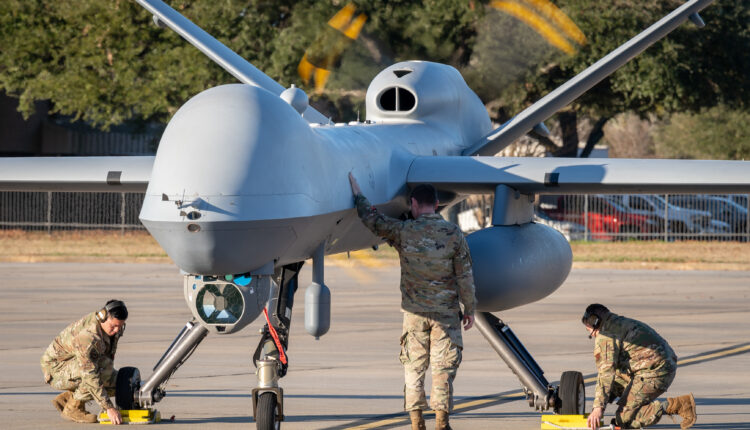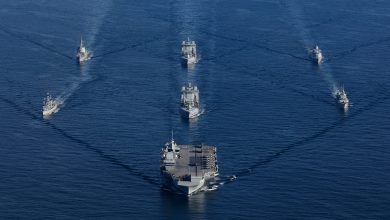U.S. Deploys MQ-9A Reaper Drones to the Philippines as South China Sea Tensions Reach New High

The arrival of U.S. Marine Corps MQ-9A Reaper drones in the Philippines marks a major escalation in American support for Manila’s maritime surveillance efforts, reshaping the Indo-Pacific strategic balance amid intensifying South China Sea tensions with China.
In a significant escalation of bilateral defence cooperation amid rapidly intensifying tensions in the South China Sea, the United States Marine Corps has deployed a squadron of MQ-9A Reaper unmanned aerial vehicles to the Philippines to reinforce Manila’s maritime surveillance and intelligence-gathering capabilities.
This strategic deployment, publicly disclosed in mid-November 2025, represents one of Washington’s most consequential military moves in Southeast Asia since the implementation of the Enhanced Defense Cooperation Agreement (EDCA), and it underscores the deepening operational alignment between the U.S. and the Philippines at a time of persistent and unprecedented Chinese coercive activities.
A spokesperson for U.S. Marine Corps Forces Pacific stated, “At the request of the Philippine government, Marine Unmanned Aerial Vehicle Squadron (VMU) 1 is temporarily deployed to the Philippines to support Philippine regional maritime security through shared maritime domain awareness,” underscoring the bilateral nature of the initiative.
The deployment also serves as a highly visible demonstration of Washington’s commitment to preserving a “free and open Indo-Pacific,” echoing broader Indo-Pacific defence strategies meant to counterbalance Beijing’s expanding military footprint across contested maritime regions.
This development carries wider geo-strategic implications for Southeast Asia, including for Malaysia, which continues to navigate its own complex maritime disputes with China in the Spratly Islands and at the Luconia Shoals while balancing diplomatic engagement with security realities on the water.
The South China Sea is one of the world’s most vital commercial arteries, carrying more than USD 3 trillion (approximately RM 14.3 trillion) worth of global trade annually, and any shift in operational capabilities—such as increased drone surveillance—can reshape the strategic balance across the region.
China’s sweeping claim over nearly the entire South China Sea, embodied in the infamous “nine-dash line,” overlaps the exclusive economic zones (EEZs) of ASEAN member states including Malaysia, the Philippines, Vietnam, Brunei, and Indonesia, creating a persistent flashpoint for confrontation and regional insecurity.
For the Philippines, the West Philippine Sea encompasses strategic features including the Second Thomas Shoal, Scarborough Shoal, and the broader Spratly Islands archipelago, each of which has been the site of repeated Chinese incursions and aggressive maritime coercion.
Since the landmark 2016 ruling by the Permanent Court of Arbitration in The Hague—which invalidated China’s sweeping maritime claims—Beijing has escalated military pressure and refused to recognise the decision, further intensifying the regional security climate.
Recent years have seen a steep and alarming rise in direct confrontations between China and the Philippines as Chinese Coast Guard (CCG) vessels, reinforced by maritime militia units and supported by People’s Liberation Army Navy (PLAN) combatants, have engaged in increasingly dangerous and unlawful actions.
The most notorious incident occurred on June 17, 2024, at the Second Thomas Shoal, when a Philippine Navy SEAL lost his thumb during an aggressive ramming manoeuvre by Chinese forces—a stark reminder of the highly volatile environment facing Filipino personnel on the frontlines.
Chinese vessels have routinely deployed high-pressure water cannons, executed dangerous blocking manoeuvres, and even conducted purposeful collisions to disrupt Philippine resupply missions to the BRP Sierra Madre, a grounded World War II-era ship deliberately stationed to assert Manila’s sovereign rights in the area.
These attacks have jeopardised the safety of civilian and military personnel, severely disrupted Philippine Coast Guard operations, and highlighted the stark power imbalance between the Philippines and China’s vastly superior maritime forces.
Consequently, Manila has been compelled to strengthen strategic partnerships under its 1951 Mutual Defense Treaty with the United States, which obligates Washington to respond in the event of an armed attack on Philippine forces in the Pacific theatre.
Within this context, the U.S. Marine Corps’ deployment of MQ-9A Reapers constitutes a decisive response aimed at reinforcing Manila’s intelligence, surveillance, and reconnaissance (ISR) capabilities to better monitor assertive Chinese activities.
The deployment involves Marine Unmanned Aerial Vehicle Squadron (VMU)-1, based in Yuma, Arizona, and operating under the I Marine Expeditionary Force, which temporarily stationed its Reaper systems at Basa Air Base in Pampanga, one of the nine Philippine facilities accessible under EDCA.
The presence of VMU-1 demonstrates Washington’s intent to bolster shared maritime domain awareness, improve operational coordination, and enhance joint situational intelligence—a critical advantage in a region increasingly characterised by grey-zone operations.
The MQ-9A Reaper, manufactured by General Atomics Aeronautical Systems, is one of the world’s most capable long-endurance unmanned aerial vehicles, proven across multiple theatres including counterterrorism operations, maritime reconnaissance, and strategic ISR missions.
With a wingspan of 66 feet and a maximum takeoff weight exceeding 10,000 pounds, the Reaper can remain airborne for more than 27 consecutive hours—an operational endurance ideally suited to the vast, open waters of the South China Sea.
Its sophisticated sensor suite includes electro-optical and infrared cameras, synthetic aperture radar (SAR), and advanced signals intelligence (SIGINT) sensors, enabling real-time detection, tracking, and monitoring of maritime vessels across a wide operational radius.
Although the MQ-9A is capable of carrying AGM-114 Hellfire missiles and laser-guided GBU-12 Paveway II precision bombs, the United States has deployed only unarmed variants to the Philippines, reflecting Washington’s intention to focus on ISR missions rather than offensive operations.
This unarmed configuration lowers escalation risks, mitigates potential political sensitivities within ASEAN, and reinforces the operational narrative that the deployment is aimed at transparency, surveillance, and maritime safety—not conflict.
Sspokesperson for U.S. Marine Corps Forces Pacific stated, “At the request of the Philippine government, Marine Unmanned Aerial Vehicle Squadron (VMU) 1 is temporarily deployed to the Philippines to support Philippine regional maritime security through shared maritime domain awareness,” underscoring the bilateral nature of the initiative.
The spokesperson added, “The temporary stationing of unarmed MQ-9As to the Philippines demonstrates mutual commitment to improving the collective maritime security and supports our common goal for a free and open Indo-Pacific,” reinforcing Washington’s longstanding strategic messaging.
This deployment marks the latest evolution of U.S.–Philippine drone cooperation, following VMU-3’s achievement of initial MQ-9A operational capability in 2023, which was described as a “game-changing capability” tailored for Indo-Pacific operations under Force Design 2030.
Exercises such as PRISM RAVEN have already integrated U.S. Reapers with Philippine Hermes 900 UAVs for combined air patrols, demonstrating the growing interoperability between both militaries in complex maritime environments.
The United States has also supplied the Philippines with ScanEagle drones and committed USD 500 million (approximately RM 2.38 billion) in defence support for Armed Forces of the Philippines (AFP) modernisation, including unmanned surface vessels and advanced C4ISR systems.





